John J. Flanagan and Westminster Park’s St. Lawrence Anglers
by: Linda Twichell
The stories of the network of Westminster Park’s families continue to unfold: The Northrup’s, the Peckham’s, the Carpenter’s, the Cassidy’s, the Imbrie’s (Footnote 1), the Stewart’s, the Shepard’s were all connected through Rev. Dr. Fowler. Most, but not all, were members of the Westminster Presbyterian Church in Utica. The others were close friends of those congregants (Footnote 2)
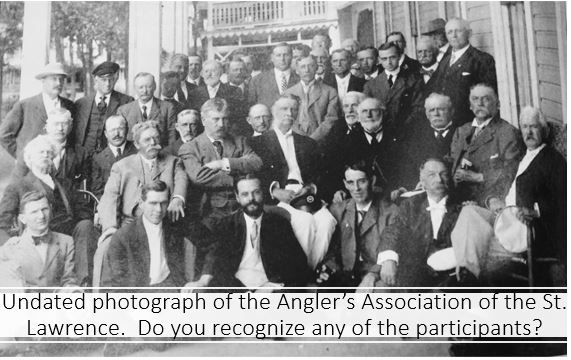
An affiliation beyond the Utica Presbyterian Community that also ran through this group of people was that they all were members of the Saint Lawrence Anglers’s Association. Much has been written about the Anglers. Previous articles in thousandislandslife.com written by Paul Malo, Rex Ennis, Steven D. Glazer, and others cover some history and impact of the Anglers. Often these histories focused on the wealthiest and most politically connected members of the organization. This article will tell a slightly different tale.
To understand the history of the conditions on the River in the 1880’s, I read an article by Arthur B. Strough in the 1901 State of New York Forest, Fish & Game Commission, Seventh Report. Strough reports that some commercial fishermen were decimating the fish population through the practice of netting. Snaring fish in nets yielded large catches of fish, and, in particular, Black Bass and Wall-eyed Pike, which were highly prized by sport fisherman. In 1883, net fishing was illegal, but the laws were often ignored, as there was no enforcement on the River. Disgruntled sport fishermen decided to organize and take matters into their own hands. “Raids were planned, steamboats chartered and guides employed, with the result that hundreds of nets were taken from the water and burned.” By the end of the season, an organization for continuing this work to end illegal net fishing and to promote the tourism trade was formed. Individuals with political connections convinced the New York State Governor to appoint a Game Protector in the 1000 Islands and volunteered the use of their private yachts for the purpose of enforcement. As a result, Strough says, “a large number of the men employed in netting adopted other vocations and the game fishing soon showed signs of improvement.” Moreover, a group of powerful and wealthy individuals had become united intent on “protecting” the area.
Back to the Anglers and the Westminster connection: In October of 1883 a group of interested fishermen met in Albany, NY and established an organization to “prevent illegal fishing by nets.” Meetings continued to be held in Albany in November 1883 with as many as sixty interested parties in attendance.
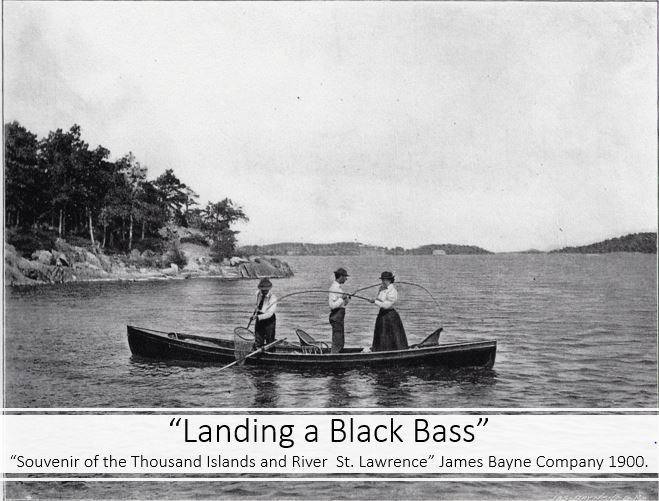
In February of 1884 the “Anglers’ Association of the Saint Lawrence River” was incorporated. The first official meeting was held in Utica in March of 1884. The purpose of the organization was “social, fishing, and lawful sporting purposes…” One early intention was to establish a library with reading rooms and meeting rooms where members could socialize and discuss the advancement of sporting purposes in the Thousand Islands. Fourteen “managers” were appointed. The first president was John J. Flanagan of Utica. Who was this man?
John J. Flanagan was a native of Utica, New York. As a young man, he learned the art of telegraphy and, in the Civil War era, he served in the military telegraph service, communicating regularly with Civil War Generals Grant and Sherman. Flanagan continued to lead an active life after the war and was considered to be “prominent in social, political, and civic life and a great favorite in society, where his conversational gifts were highly valued”, according to the “Watertown Herald”, March 3, 1888. Flanagan was the editor of the “Utica Observer” and as a newspaper man he traveled to all areas of the state, forging many personal and professional connections. Flanagan spent his summers in Clayton at the Hubbard House and was a favorite among the local oarsman. He was a larger-than-life personality. It is no surprise that the newly formed Anglers’ Association would recognize his energy, passion, and connections and elect him as the first President of their society. Flanagan was a personal friend of a number of Westminster cottage owners from Utica.
The newly formed Anglers’ Association established the custom of having an annual meeting and excursion on the Saint Lawrence River. In 1884 and in 1885 I believe this meeting was organized by the Clayton contingent with James Delmonico Story of Albany as the caterer. 1886 became the year for the Alexandria Bay delegates to do the planning and this is the focus of our tale.
Anglers from New Orleans to Maine convened on the Saint Lawrence River in August of 1886. The annual business meeting was held at the Crossmon House in Alexandria Bay on August 4th. At this meeting, reports from the 1885 season were given. The Anglers hired Daniel Starring of Alexandria Bay to serve as “a special protector to act under the direction of the officers of the association” at a salary of $50. per month plus expenses. His duties were to support the NY State Game Protectors in enforcing netting regulations. Membership of the Anglers stood at 163 paid with 63 new members to be added to the list. President Flanagan announced that General Rodney Ward of New York would sponsor a competition to honor the fisherman (or woman) who caught the biggest small mouth bass in the summer of 1886. He offered a handsome prize: a custom bamboo fly fishing rod with a reel nameplate inscribed with the winner’s name and a message of congratulations. A committee was established to work with the Canadian Commissioners of Fisheries to establish a cohesive code for the prevention of net fishing, and also to establish a unified beginning and end date to the bass fishing season. (Both Canadian and American fishermen saw the need for conservation of fish on the River, but they were not in agreement about how to accomplish it.) A report from J. B. Hill of the Clayton Fish Hatchery announced that 4,000,000 fish had been hatched that season including trout, whitefish, ciscoes, wall-eyed pike, and hybrid salmon/trout. Officers for the coming year were elected. A committee was formed to design an official badge.
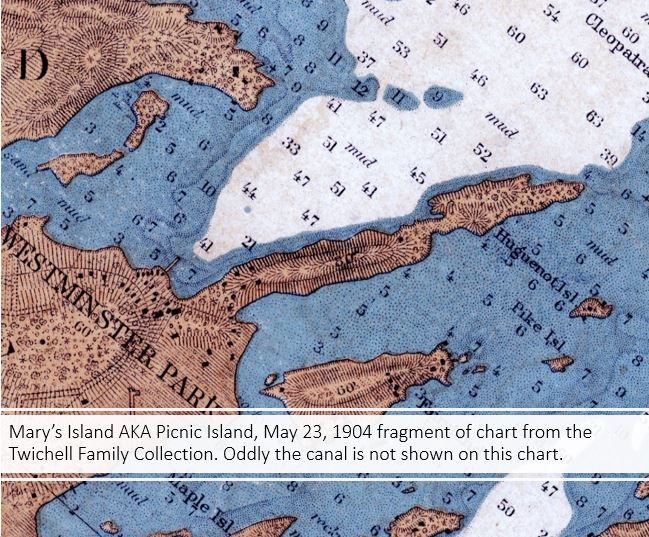
August 5, 1886 was the day of celebration. The Alexandria Bay Anglers planned a gala event on Mary’s Island, formerly known as Picnic Point. Mary’s Island was included in the original Westminster Park tract. It is a picturesque island of 12 acres separated from Wellesley Island by a small canal. Reports indicate that there was a rustic bridge across the canal and a picnic pavilion on the island. It was a favorite picnic location of Westminster Park hotel guests as it featured views of both the Canadian and the American Channel and the mouth of the Lake of the Isles. The Alexandria Bay Anglers chose Mary’s Island as the site of their annual excursion.
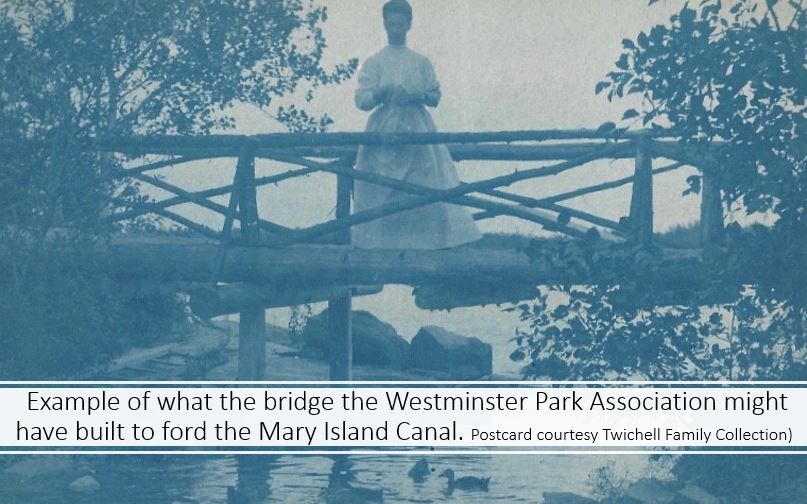
We see from family papers that John J. Flanagan (Utica), President and W. W. Byington (Albany), Secretary of the Anglers were in Westminster Park that day. They visited the Northrup Cottage, and Flanagan, in his usual flamboyant way, left this note:
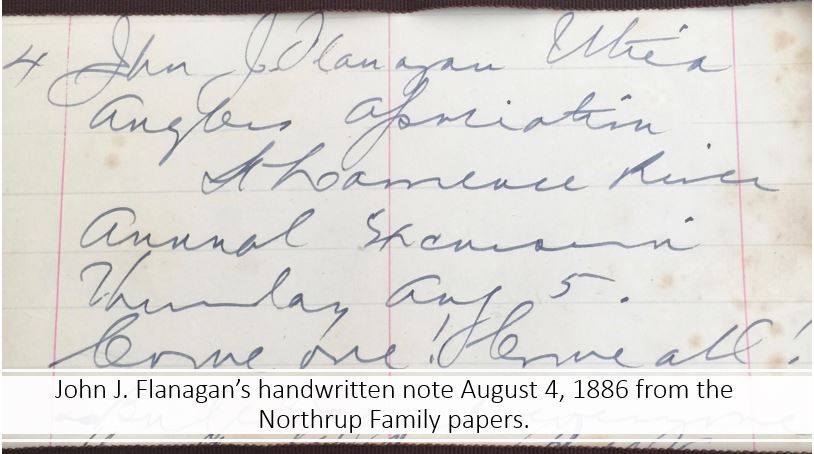
The steamer John Thorn driven by Capt. Vernon Sweet was chartered to carry Anglers and friends on a trip around the islands ending at Mary’s Island. Penn and Lell’s Band of Syracuse was aboard to furnish musical entertainment for the voyage. The event was presided over by John J. Flanagan and his friend, James Delmonico Story, a caterer from Albany. John J. Flanagan brought a number of “fresh-air children”.
As the guests were occupied on the river sight-seeing cruise, preparations were underway at Mary’s Island. The large hotels in Alexandria Bay sent their executive chefs, bakers, and wait staff to prepare for the feast. It was reported that 20 chefs were on the island to prepare the food. Tables 180 feet long were set with handsome ornamentation. This provided seating for 230 guests. The steamer Thorn carried 300 passengers. With the arrival of smaller craft, both steam ships and sail vessels, the numbers of guests swelled to a reported 450 people.
The blessing was delivered by Rev. Dr. Allen of Clayton. Additional clergy presided over the long table: Rev. Dr. Corey of Utica and Rev. Dr. North of Buffalo. Photographer A. C. McIntyre was on hand to immortalize the event with his photographic skills. The guests included a number of newspaper editors, Congressmen, jurists, millionaires, and River Royals of every kind including some of our Westminster families mentioned above. Guests of the Association also included a boys’ choir from St. Luke’s of Buffalo and a boys’ choir from Rochester. What an extravaganza!
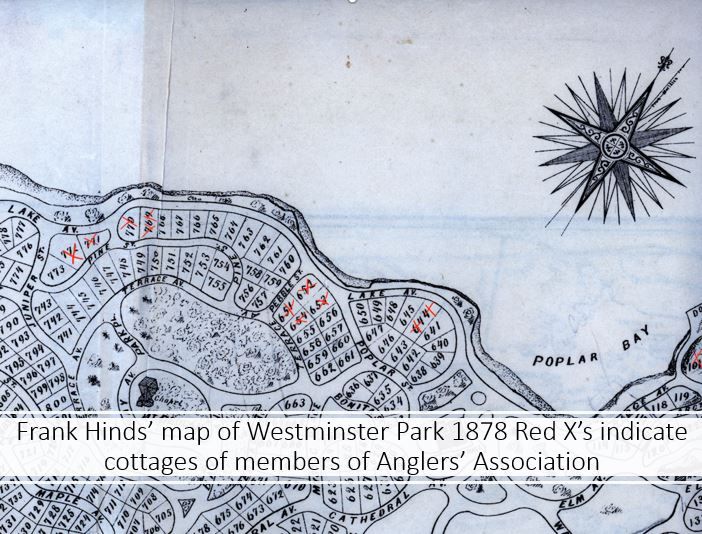
In the afternoon under the direction of Chairman Quinby of the Anglers’ Executive Committee, illegal fishing nets worth three thousand dollars that had been confiscated by Protectors Steele and Starring during the 1886 season were piled on the high rocks of Mary’s Island and set ablaze. Festivities continued through the afternoon and at 5 PM the revelers headed for their lodging for the evening at area hotels and cottages.
It had been a glorious day.
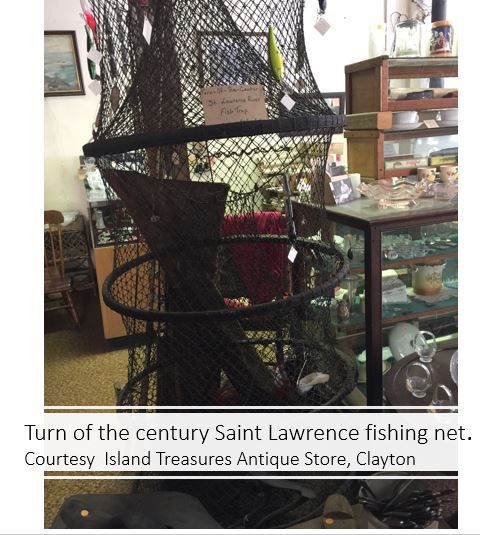
John J. Flanagan continued to serve as President of the Anglers’ Association until his untimely death. In February 1888, Flanagan “fell dead” from apoplexy, while attending the funeral of a friend in Utica. He was 47-years-old. Thus ended the tale of this heroic man. The mission of the Anglers’ Association of the Saint Lawrence River continued for decades. W. W. Byington of Albany was elected to finish Flanagan’s term as President. The River saw a new appreciation for conservation measures to ensure fish population. The Anglers’ were also instrumental in lobbying for the inception of the International Park system. In September of 1897, the “Albany Times Union” reported that the State Fisheries, Game, and Forest Commission purchased Mary’s Island from the Westminster Park Association for the price of $5000. This land was the first purchase for the International Park.
The work of John J. Flanagan and the Anglers’ Association of the Saint Lawrence River permanently impacted river conditions and led to the promotion of tourism in the 1000 Islands region. Their influence from those days in the 1880’s continues today.
footnotes:
(1) Not all who purchased lots in 1878, built cottages; Reverend Charles Kisselman Imbrie of Jersey City, New Jersey, purchased Lot 770, in the first lot sale, on May 23, 1878. This lot was situated between the property of DeVillo Northrup (769) and William Penn Carpenter (771). Rev. Imbrie and his family came to Westminster for several summers, but his lot was never developed. He and his family stayed in the Park House. (the original name of the Westminster Hotel).
It is likely that Imbrie was a colleague of Rev. Dr. Philemon H. Fowler. Both men were Presbyterian ministers, and both had studied at Princeton Theological Seminary in the same era. There is evidence that Imbrie socialized with the Northrup family while on the River.
(2) We should note that the love of sport fishing brought Merritt Peckham, Sr. to the Saint Lawrence River before the days of Westminster Park. Peckham was the father of Annie Crocker Peckham Northrup, owner of Lot 769. Peckham’s name was listed in an article reminiscing about old-time fishing greats, such as John Van Buren, George Dawson, Silas Wright, and Seth Green in an article in the New York Times, in October of 1884. Merritt Peckham was a frequent visitor at the Northrup cottage.
©Linda Twichell 2018
Linda Lewis Twichell, a fifty-six-year resident of Westminster Park, has collected historical information on the Westminster community since the 1970’s. Presently, her research focuses on the lives of the people who settled here in the last quarter of the 19th century, and the cottages they built. A book of Westminster Park, its people, and their stories is in the works. Be sure to check out Linda’s other historical research published in previous issues of TI Life.
Next month we will feature another family of the Westminster community,
The Tavenders of Utica, NY.




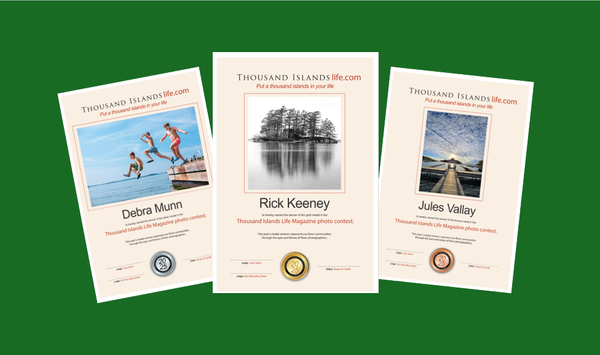

Please click here if you are unable to post your comment.